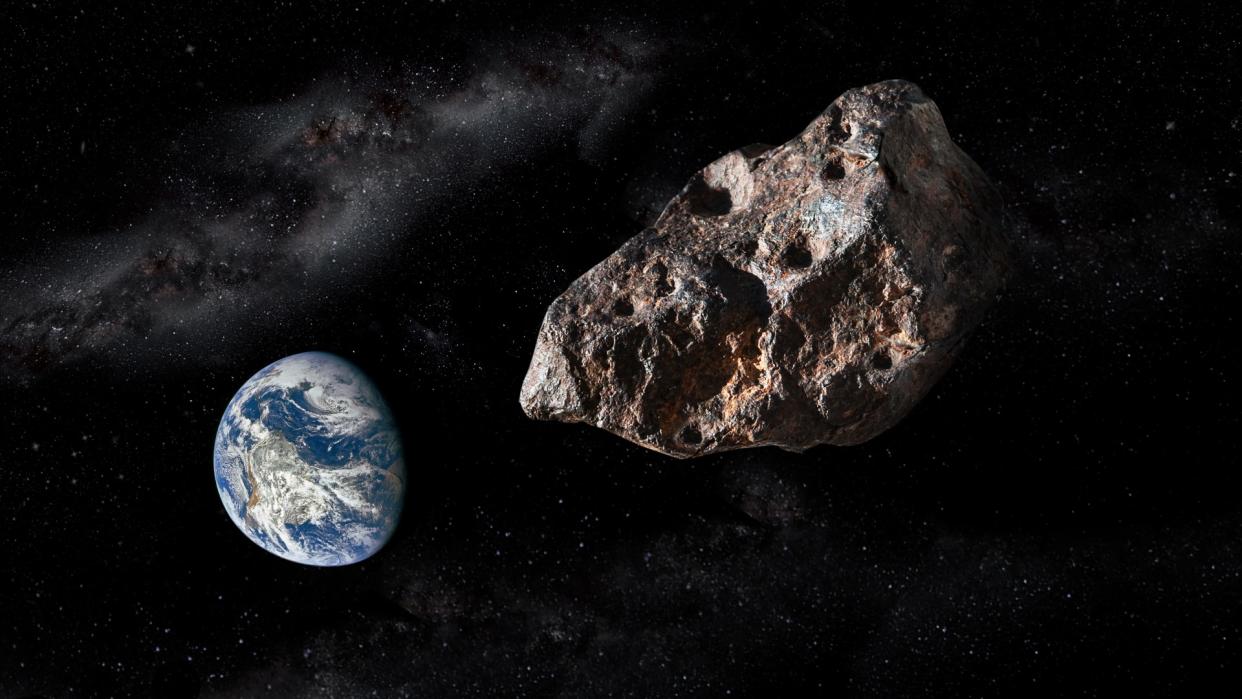'Potentially hazardous' asteroid twice the size of the World Trade Center will shoot past Earth tonight

An asteroid the size of five to 10 football fields will zip safely by Earth tonight (Feb. 15).
At its closest approach, asteroid (199145) 2005 YY128 will still be about 2.8 million miles (4.5 million kilometers) from Earth, or 12 times the average distance between Earth and the moon. However, the asteroid poses no threat to our planet.
Scientists aren't sure exactly how big the asteroid is; estimates range from 1,900 to 4,265 feet (580 to 1,300 meters) in diameter, according to EarthSky.org. With its median size estimated at about 3,100 feet (944 m) across, the asteroid would be about twice as wide as New York City's One World Trade Center is tall.
NASA classifies the asteroid as a near-Earth object (NEO) because its orbit brings it within 30 million miles (48 million km) of Earth's orbit. What's more, the space rock is technically a "potentially hazardous object" (PHO) because it's larger than 492 feet (150 m) and its orbit brings it within about 4.6 million miles (7.4 million km) of Earth's orbit, or 0.05 astronomical units, according to NASA. (One astronomical unit is the average distance between Earth and the sun.)
Related stories
—How many satellites orbit Earth?
—What happened when the dinosaur-killing asteroid slammed into Earth?
—What are the largest impact craters on Earth?
Despite that classification, the asteroid does not appear to pose any threat to our planet at any point in the foreseeable future. Scientists at NASA can accurately calculate an asteroid's trajectory more than 100 years out, and the asteroid won't come any closer than tonight's flyby before the year 2171, when it'll pass by on Sept. 28 at 6 million miles (10 million km), according to Spacereference.org.
Asteroid (199145) 2005 YY128 was discovered in 2005 by scientists using the Kitt Peak Observatory in Arizona. When scientists find a new asteroid, they report it to the International Astronomical Union's Minor Planet Center, housed at the Smithsonian Astrophysical Observatory in Cambridge, Massachusetts. Then, scientists all over the world can observe the asteroid and calculate its trajectory. All NEOs and PHOs are diligently monitored by NASA and other space agencies around the world.

